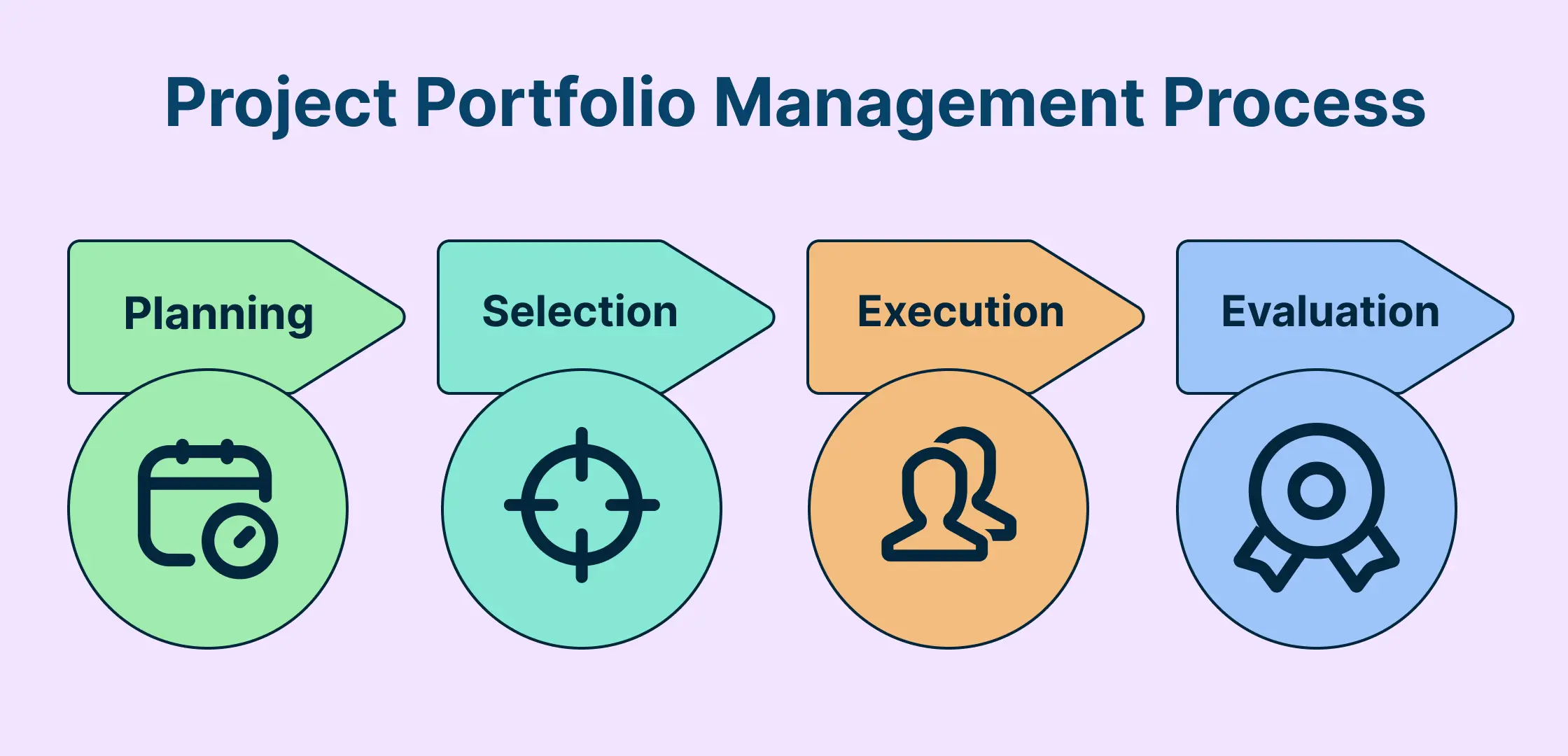How to Manage Your Project Portfolio Like a Pro
If you are a project manager you know how challenging it can be to juggle multiple projects at the same time. You have to balance competing priorities, allocate resources, monitor progress, and deliver results. How can you do all that without losing your sanity?
The answer is project portfolio management. In this blog post, we will explain what project portfolio management is, why it is important, and how you can use Crealately to manage your project portfolio effectively.
What is a Project Portfolio?
A project portfolio is a collection of projects that are aligned with the strategic goals and objectives of an organization. A project portfolio can include projects of different types, sizes, scopes, and complexities. For example, a project portfolio can consist of:
Ongoing projects that deliver value to the customers and stakeholders.
New projects that explore new opportunities or address emerging needs.
Improvement projects that enhance the quality or efficiency of existing processes or products.
Innovation projects that create new products or services or disrupt the market.
A project portfolio is not just a list of projects. It is a dynamic and evolving entity that reflects the changing needs and priorities of the organization. Therefore, a project portfolio needs to be managed carefully and continuously.
Learn more about setting up a ipeline for better project portfolio management.
What is Project Portfolio Management?
Project portfolio management is the process of selecting, prioritizing, and managing multiple projects within an organization. It involves aligning the projects with the strategic goals, resources, and risks of the organization. Project portfolio management helps to ensure that the projects are delivering value, meeting deadlines, and staying within budget. It also helps to balance the workload and optimize the use of resources across the projects.
Managing a project portfolio goes beyond merely managing projects, it requires a holistic view of the organization’s vision, mission, and objectives, as well as the interdependencies and trade-offs among the projects. It is a dynamic and iterative process that requires constant monitoring, evaluation, and adjustment of the portfolio based on changing needs and circumstances.
Also read about how to better manage your projects with Kanban boards.
Project Portfolio Management Process
Portfolio management is the process of selecting, prioritizing, executing, and evaluating the projects in a portfolio. Portfolio management involves four main steps:

1. Planning
This step involves defining the strategic goals and objectives of the organization, identifying the potential projects that can contribute to those goals, and assessing the feasibility, risks, benefits, and costs of each project.
2. Selection
Choose the best mix of projects that can maximize the value and alignment of the portfolio. This may involve using various criteria, such as strategic fit, return on investment, resource availability, risk appetite, etc.
3. Execution
Allocate resources, assign roles and responsibilities, set milestones and deliverables, and monitor and control the performance of the projects in the portfolio.
4. Evaluation
This step involves measuring the outcomes and impacts of the projects in the portfolio, comparing them with the expected results and benefits, and identifying the lessons learned and best practices for future improvement.
Why is Project Portfolio Management Important
Aligning the projects with the strategic vision and mission of the organization. Portfolio management ensures that the projects are relevant, meaningful and aligned with the organizational goals and values. This way, the projects can contribute to the long-term success and sustainability of the organization.
Optimizing the use of resources and avoiding wastage or duplication. Well managed project portfolios help organizations to achieve more with less. It assists in effective resource allocation depending on the feasibility of the project. It also eliminates or reduces the projects that are redundant, low-priority or low-performing. This way, the organization can save time, money and effort, and increase its productivity and profitability.
Managing dependencies and interdependencies among the projects. Portfolio management helps the organization to coordinate and integrate its activities and deliverables across different projects. It helps to identify and resolve potential issues and risks that may arise from the interactions and overlaps among projects. It also helps to leverage synergies and opportunities that may emerge from the collaboration and integration among the projects. This way, organizations can enhance its performance and quality, and deliver greater value to its customers and stakeholders.
Balancing risk and reward across the portfolio. Portfolio management helps to assess and prioritize the projects based on their expected costs, benefits, risks and returns. It also helps to monitor and control the performance and outcomes of the projects, and to adjust or change them as needed. This way, the organization can manage its uncertainties and contingencies, and maximize its returns on investment.
Enhancing communication and collaboration among the stakeholders. Communication is optimized with efficient portfolio management. Teams can communicate clearly and consistently the vision, objectives, expectations and progress of the projects to all the stakeholders. It also helps to solicit feedback, input and support from the stakeholders, and to address their needs, concerns and issues.
Best Practices in Portfolio Management
Define clear and measurable goals and objectives. Determine what you want to achieve, why, and how you will measure your progress and success.
Implement a transparent and consistent process to prioritize projects. Establish a clear criteria and guidelines that are aligned with your goals and objectives, and that are communicated and followed by everyone involved.
Use data-driven tools and techniques to analyze and compare projects. Collect relevant and reliable data on each project’s costs, benefits, risks, and impacts, and use appropriate methods and tools to evaluate and rank them.
Involve relevant stakeholders in decision-making and feedback. Identify who they are, what their interests and expectations are, and how you will engage them throughout the portfolio lifecycle.
Communicate regularly and clearly with all parties involved. You need to have a communication plan that specifies what, when, how, and with whom you will share information and updates on your portfolio.
Be adaptable to changing circumstances. Monitor the internal and external factors that may affect your portfolio’s performance and alignment with your goals and objectives, and make timely and informed decisions to modify or terminate projects as needed.
Review your portfolio periodically and celebrate achievements. Have a review plan that defines how often, how, and by whom you will evaluate your portfolio’s outcomes and impacts, and how you will recognize and reward your team’s efforts.
Common Challenges in Project Portfolio Management
Dealing with uncertainty and complexity in the external and internal environment.
Managing conflicting interests and expectations among different stakeholders.
Balancing short-term and long-term goals and outcomes.
Resolving trade-offs and compromises among competing criteria.
Handling resource constraints and bottlenecks.
Coping with change resistance and cultural barriers.
Why You Need a Portfolio Management Platform
To overcome these challenges and streamline your portfolio management process, you need a powerful and user-friendly platform that can help you:
Plan your portfolio strategically and align it with your organizational goals.
Select your projects objectively and prioritize them based on value and impact.
Execute your projects efficiently and effectively using agile methodologies.
Evaluate your projects accurately and comprehensively using real-time data.
Collaborate with your team members and stakeholders seamlessly using cloud-based technology.
How Can You Manage Your Project Portfolio with Creately
Create your own custom portfolio dashboard that shows you the status, progress, health, and performance of your projects at a glance.
Use drag-and-drop functionality to organize your projects into different categories, such as type, phase, priority, etc.
Apply filters and sorting options to view your projects based on various criteria, such as budget, schedule, scope, quality, risk, etc.
Use interactive charts and graphs to visualize your data and insights in an engaging way.
Integrate with other tools and platforms that you use, such as Google Workspaces, Microsoft Teams and Slack.
Wrapping Up
Project portfolio management is a vital skill for any project manager who wants to deliver value and excellence to their organization. By using Crealately, you can simplify and enhance your portfolio management process and achieve your goals faster and better.
If you want to learn more about how Crealately can help you with project portfolio management, sign up for a free trial today and see for yourself.
FAQs About Project Portfolio Management
There are different ways to measure the success of your portfolio, depending on your goals and objectives. Some common metrics include:
Value: The extent to which your portfolio delivers benefits and outcomes that meet or exceed the expectations of your customers and stakeholders.
Alignment: The degree to which your portfolio supports and contributes to the strategic vision and mission of your organization.
Performance: The level of quality and efficiency that your portfolio achieves in terms of budget, schedule, scope, quality, risk, etc.
Impact: The magnitude and duration of the positive effects that your portfolio creates for your organization and society.






